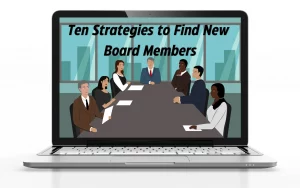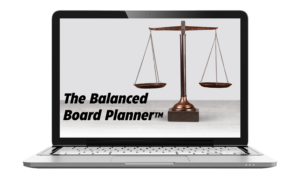Are you doing board succession planning? In the midst of a pandemic, it may be easy to put some things off, especially when boards and committees aren’t meeting in person. But it is important to plan ahead for director turnover no matter what is going on in the world.
Some things in the world might stop because of the pandemic, but here are examples of board turnover issues that have happened at organizations that I have talked to within the last few months. These are examples of things that can happen to any organization at any time. That’s why it’s so important to have an up-to-date board succession plan.
- An organization recently had to ask one of its board members to resign from the board because of early dementia. Now one of their board members has cancer and will have to leave the board. These were unanticipated departures, both individuals under 70 years of age.
- Two organizations merged and decided to combine the boards and over time reduce the size of the board. The newly combined board has only one female board member.
- One organization has been doing board succession planning, but the black lives matter movement made them realize that they aren’t doing a good enough job when it comes to diversity on their board.
- An organization wasn’t doing board succession planning, and suddenly had four out of seven board members resign, almost simultaneously.
- Another organization was really happy to get a younger individual to join their board. But within her first term on the board, she realized that she had to resign because of pressures at home.
Do any of these situations sound familiar to you? Is something similar happening at your organization? Have you even thought, recently, about what would happen if you had board turnover now?
Here is a checklist that you can use to do a checkup on your board succession planning practices.
- We have a board of directors that possesses the expertise, knowledge, and skills that are most important to our organization.
- We have formal, stated diversity goals.
- We hold all board members accountable when it comes to commitment and contribution to the board and asking non-contributing members to leave the board.
- We know when our board members may be retiring or resigning from the board.
- We have a designated committee to focus on the issue of board succession planning.
- The organization is constantly on the lookout for potential board members.
- We have a formal orientation and training process in place for new board members.
- We have a plan in place that will ensure the continuity of board leadership.
- We have a formal board member succession plan.
How did you do? I challenge you to do better in terms of board succession planning if you are falling short. Remember, your members are counting on you to be the best board you can be in representing them.
Interested in finding out your Board’s “Succession Planning Readiness Score”? Take our FREE quiz now.
Interested in learning more about board succession planning? Contact us now!


